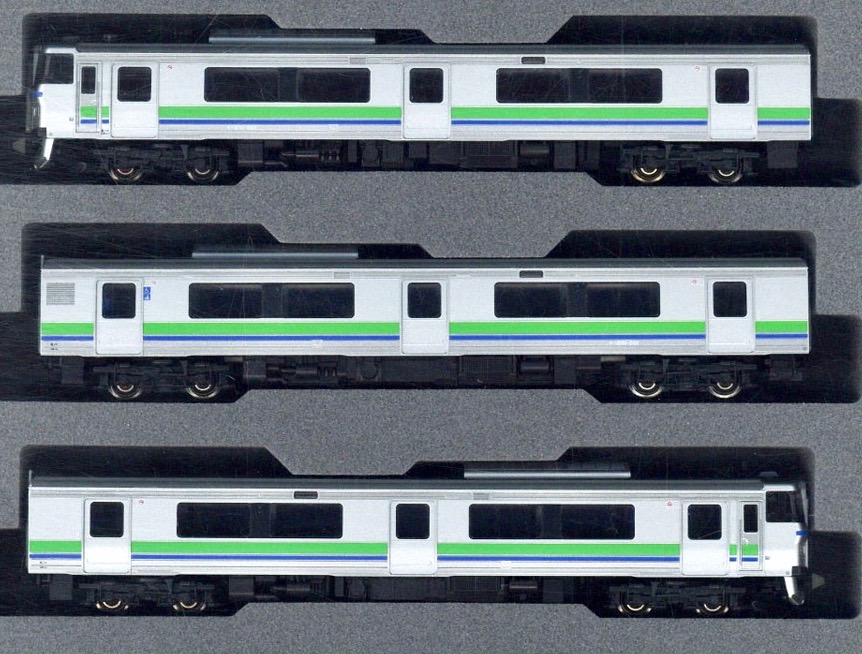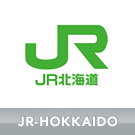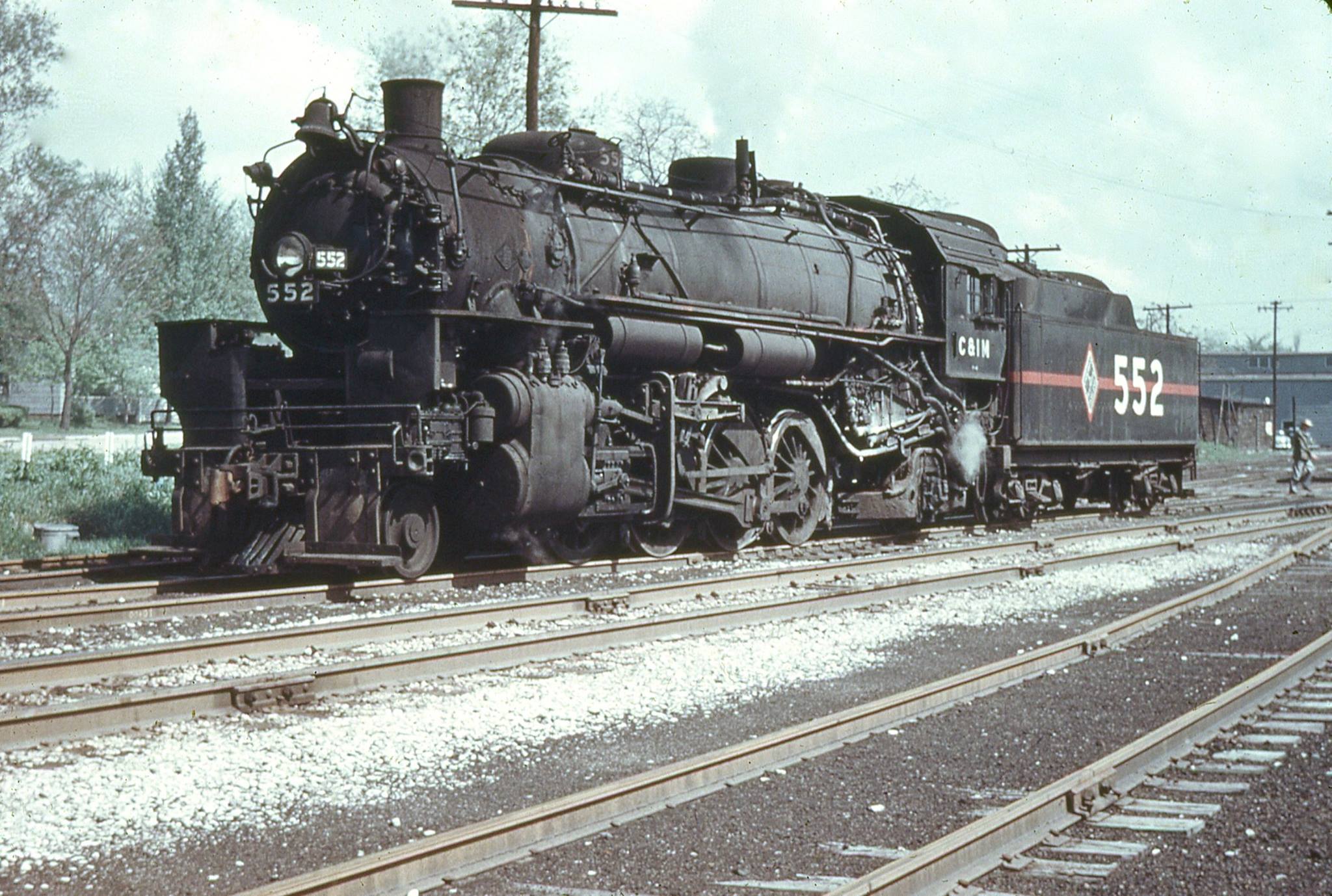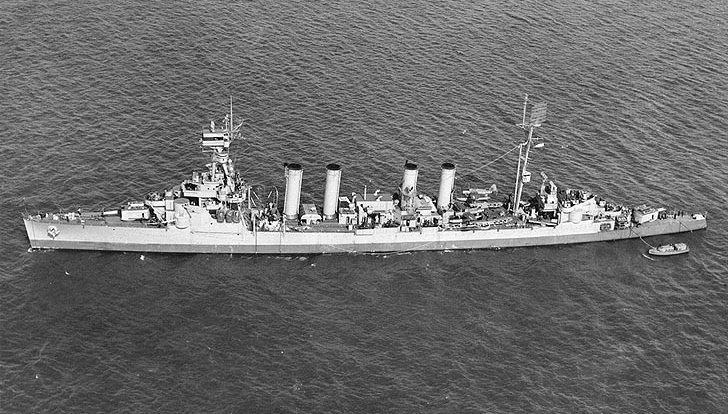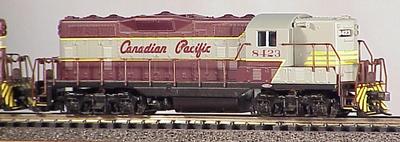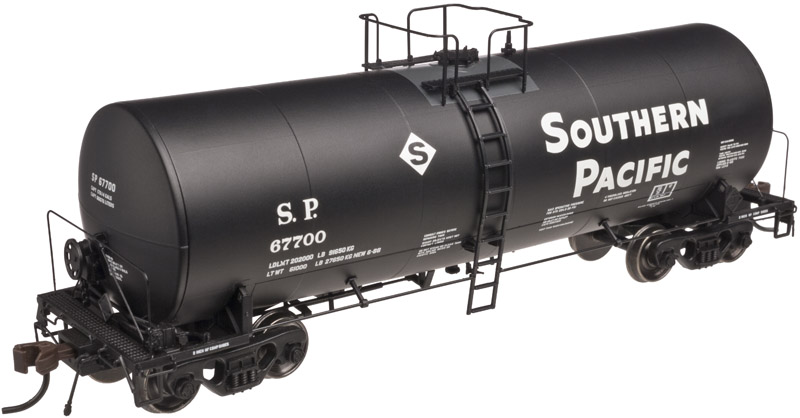Model Information: Kato boxed sets for Japanese Prototypes come in various shapes and sizes. These may contain complete train sets with track and power pack or may be as simple as a pair of passenger coaches. Many of the sets use "bookshelf" boxes with cardboard sleeves and carefully cut foam inserts.
Road Name History: The Hokkaido Railway Company (北海道旅客鉄道株式会社 Hokkaidō Ryokaku Tetsudō Kabushiki-gaisha) is one of the constituent companies of Japan Railways Group (JR Group), and is often referred to using its official abbreviation of JR Hokkaido (JR北海道 Jeiāru Hokkaidō). It operates intercity rail services in Hokkaido, Japan. The company introduced Kitaca, a smart card ticketing system, from autumn 2008.
At the time of its privatization in 1987, JR Hokkaido operated 21 railway lines totalling 3,176.6 kilometres (1,973.8 mi) of narrow-gauge (1,067 mm (3 ft 6 in)) track, as well as a ferry service to Aomori. Since then, that number has dwindled to just below 2,500 kilometres (1,600 mi), as unprofitable lines have been shut down or spun off (in the case of the Hokkaidō Chihoku Kōgen Railway). The ferry service has also been replaced by the Seikan Tunnel.
On 19 November 2016, JR Hokkaido's President announced plans to further rationalise its network by up to 1,237 km, or ~50% of the current network, including closure of the remaining section of the Rumoi Main Line (the Rumoi - Mashike section closed on 4 December 2016), the Shin-Yubari - Yubari section of the Sekisho Line, the non-electrified section of the Sassho Line and the Nemuro Line between Furano and Kami-Ochiai Junction. Other lines including the Sekihoku Main Line, Senmo Main Line, the Naroyo - Wakkanai section of the Soya Line and Kushiro - Nemuro section of the Nemuro Line are proposed for conversion to Third Sector operation, but if local governments are not agreeable, such sections will also face closure.
Hokkaido Railway's headquarters are in Chūō-ku, Sapporo.
From Wikipedia
At the time of its privatization in 1987, JR Hokkaido operated 21 railway lines totalling 3,176.6 kilometres (1,973.8 mi) of narrow-gauge (1,067 mm (3 ft 6 in)) track, as well as a ferry service to Aomori. Since then, that number has dwindled to just below 2,500 kilometres (1,600 mi), as unprofitable lines have been shut down or spun off (in the case of the Hokkaidō Chihoku Kōgen Railway). The ferry service has also been replaced by the Seikan Tunnel.
On 19 November 2016, JR Hokkaido's President announced plans to further rationalise its network by up to 1,237 km, or ~50% of the current network, including closure of the remaining section of the Rumoi Main Line (the Rumoi - Mashike section closed on 4 December 2016), the Shin-Yubari - Yubari section of the Sekisho Line, the non-electrified section of the Sassho Line and the Nemuro Line between Furano and Kami-Ochiai Junction. Other lines including the Sekihoku Main Line, Senmo Main Line, the Naroyo - Wakkanai section of the Soya Line and Kushiro - Nemuro section of the Nemuro Line are proposed for conversion to Third Sector operation, but if local governments are not agreeable, such sections will also face closure.
Hokkaido Railway's headquarters are in Chūō-ku, Sapporo.
From Wikipedia
Brand/Importer Information: Kato Precision Railroad Models (関水金属株式会社 Sekisui Kinzoku Kabushikigaisha) is a Japanese manufacturer of model railroad equipment in N and HO scales. The Tokyo-based company manufactures models based on Japanese prototypes (such as the Shinkansen bullet train) for the Japanese market, North American prototypes for the North American market and European high-speed trains for European market.
The Kato (pronounced kah-toe) model railroad companies were founded by Yuji Kato, father of current president Hiroshi Kato, of the parent company Sekisui Kinzoku Co., Ltd.
The design and distribution of models for the North American market are handled by their U.S. subsidiary, Kato USA, located in Schaumburg, Illinois.
The design of special models for the European market is handled for some of them by their partner, Lemke, whereas the general distribution of Kato products in Europe is handled by NOCH; both companies are located in Germany.
As a result, some Kato European models are sold as Kato Lemke and others as Kato (alone).
The Kato (pronounced kah-toe) model railroad companies were founded by Yuji Kato, father of current president Hiroshi Kato, of the parent company Sekisui Kinzoku Co., Ltd.
The design and distribution of models for the North American market are handled by their U.S. subsidiary, Kato USA, located in Schaumburg, Illinois.
The design of special models for the European market is handled for some of them by their partner, Lemke, whereas the general distribution of Kato products in Europe is handled by NOCH; both companies are located in Germany.
As a result, some Kato European models are sold as Kato Lemke and others as Kato (alone).
Item created by: CNW400 on 2021-04-05 10:16:07
If you see errors or missing data in this entry, please feel free to log in and edit it. Anyone with a Gmail account can log in instantly.
If you see errors or missing data in this entry, please feel free to log in and edit it. Anyone with a Gmail account can log in instantly.


